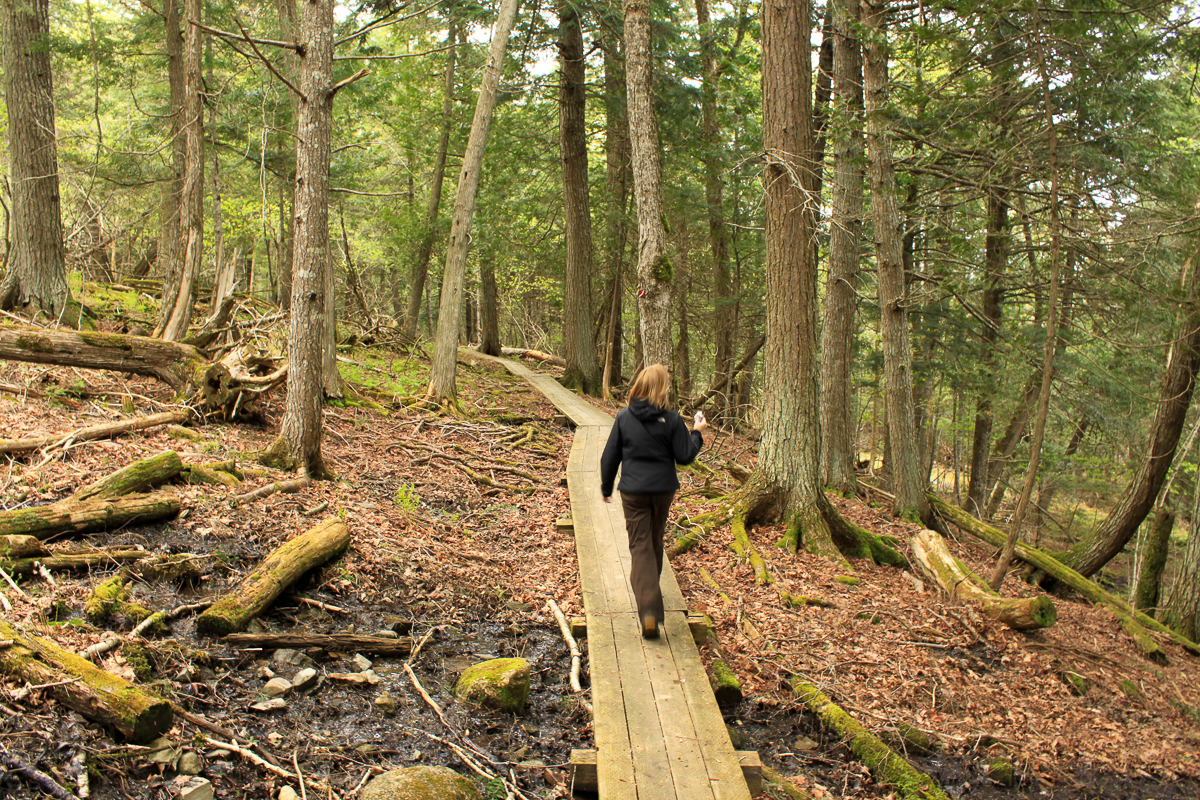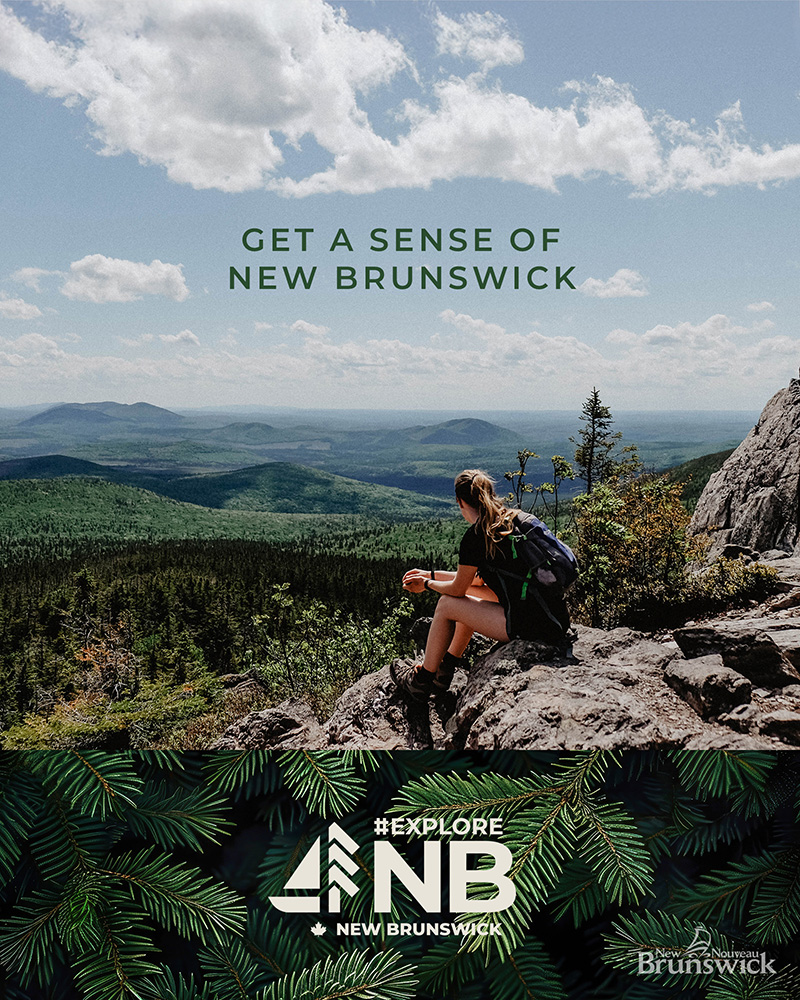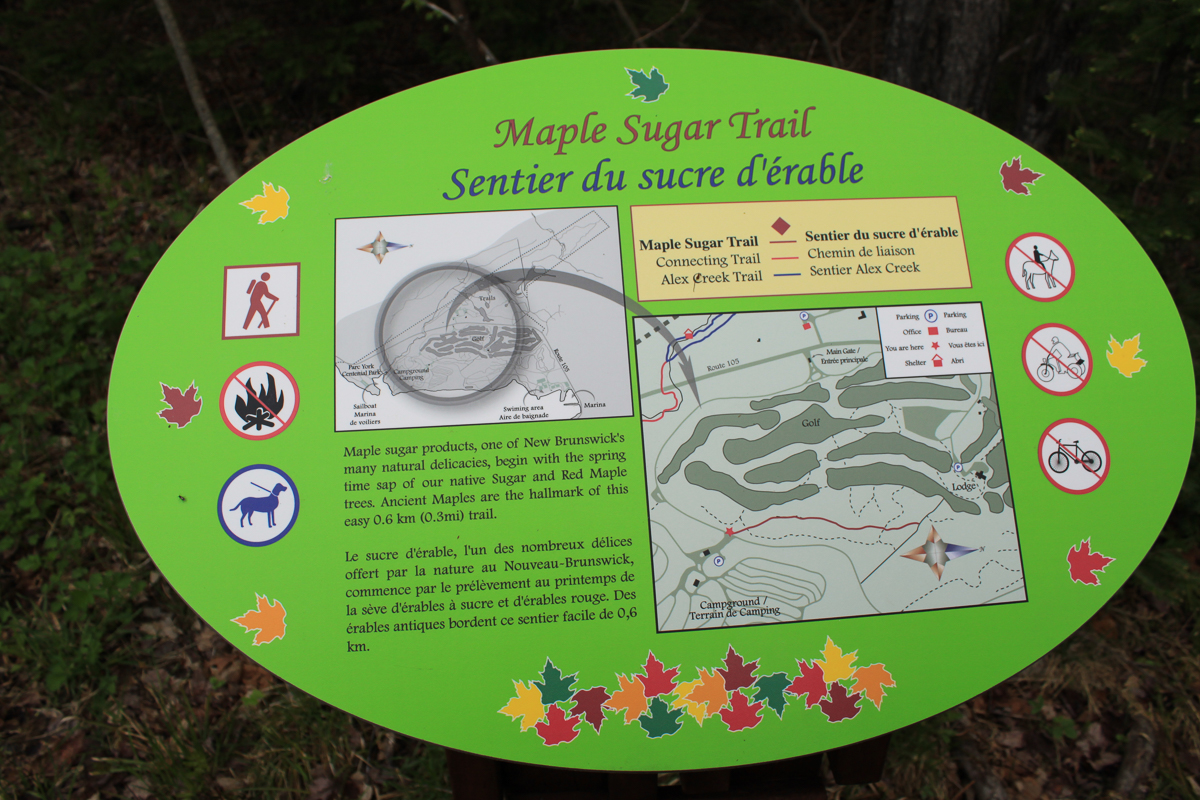Maple Sugar Trail
Mactaquac Provincial ParkQuick Facts
| Difficulty | easy |
| Trail Type | linear |
| Distance | 620 metres one-way |
| Estimated Time | 30 minutes return |
| Surface Type | forested |
| Elevation Change | 11 metres |
| Features | old forest, interp signs |
| Trail Markers | red square with white stripe |
| Scenery Rating | special features |
| Maintenance Rating | well maintained |
| Cell Reception | strong |
| Dog Friendly | on a leash |
| Fees | none |
Description
The trail climbs a small hill and then follows the contour of the hill. It goes through a stand of large hemlock and cedar, and then crosses a long boardwalk. On the other side of the boardwalk it goes through a hardwood stand with large sugar maple and yellow birch. Before coming to the end, it goes through a younger softwood stand and cedar. On our last hike we snuck up on two deer that were hanging out in the patch of cedar.
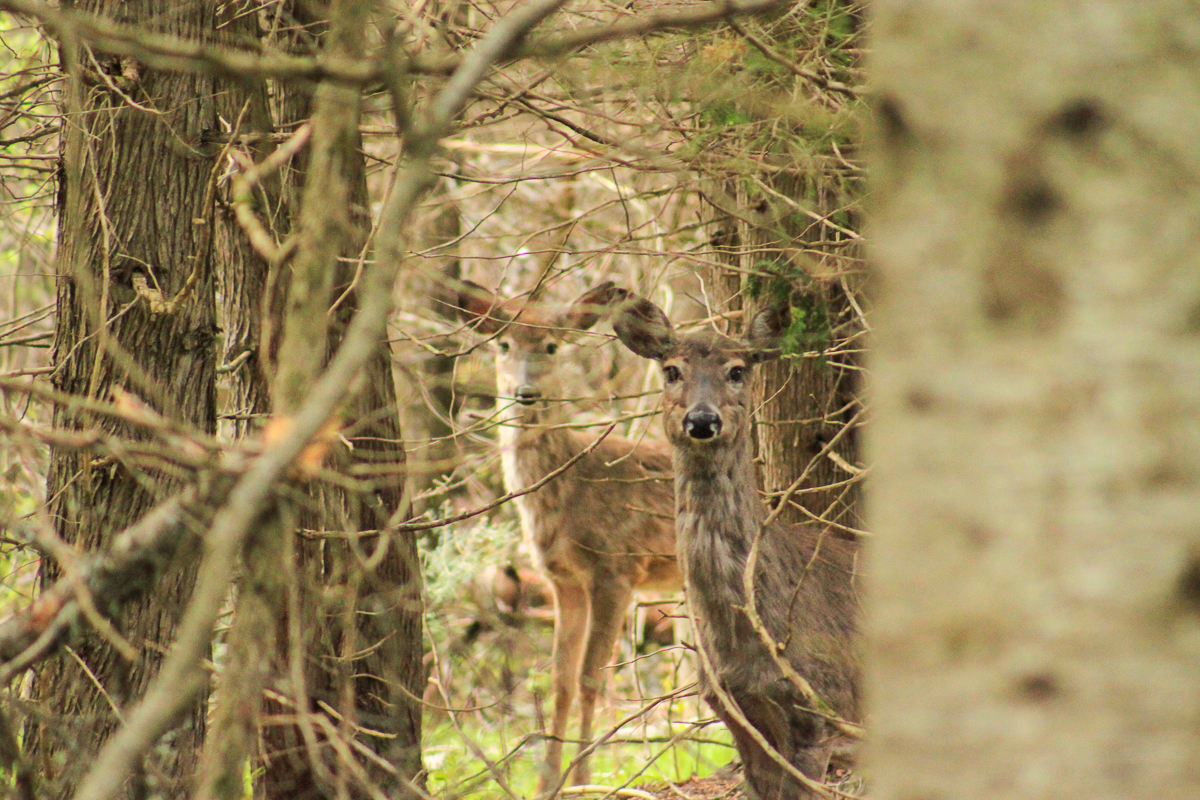
At the end the trail comes out into a field but use caution. This field is the driving range for the golf course. You can either return the way you came, or walk down the hill to the road and walk back on the road.
Map
Directions
For directions to the park go to the Mactaquac Provincial Park page.
Enter the park at the main gate, turn right at the traffic circle, and follow the signs for the beach. Continue on the road for 1 kilometre and you will come to the road for the campground on the right. The trail enters the woods across from the campground entrance. Just before the gatehouse for the campground there is a parking lot on the left.
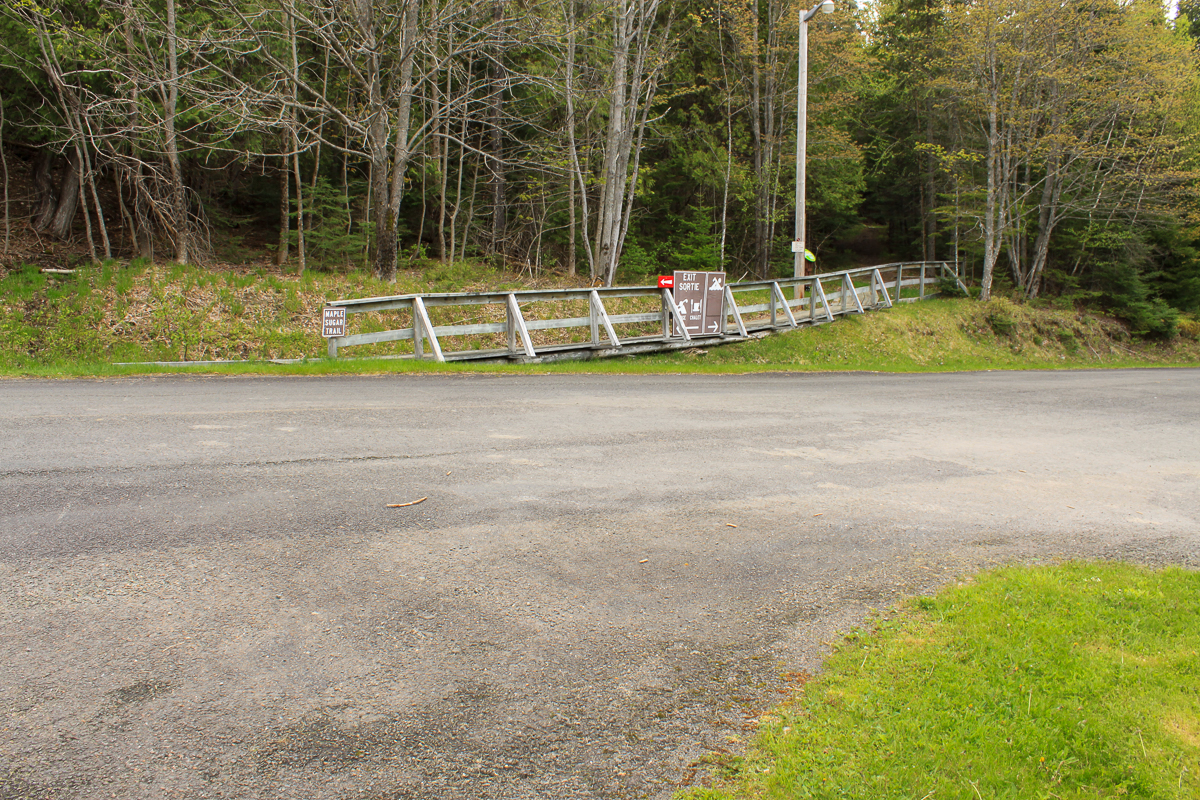
From the Sign
The yellow birch
An important source of hardwood lumber in eastern Canada... The Yellow birch is the largest of eastern birches. Also known as Swamp birch, the Yellow birch is the provincial tree of Quebec. It occurs on rich moist soils, commonly mixed with beech, sugar maple, eastern hemlock, balsam fir, eastern white pine, white spruce and red spruce.

Leaves are oval 8 to 11cm long; tip slender, sharp-pointed, base rounded, deep yellowish-green on the upper surface, lighter beneath; veins straight parallel.
The bark of the yellow birch is papery yellowish to grey. The twigs and sap have a wintergreen scent.
The bark, twigs and seeds are commonly eaten by many birds and small mammals.
From the Sign
The striped maple
Commonly called Moosewood or moose maple, the Striped Maple is a small tree or large shrub readily identified by it's vertical white stripes on greenish-brown bark. This species of maple is native to northern forests in eastern North America. Moose Maple is an understory tree of cool, moist forests preferring sloped terrain. It is among the most shade-tolerant of deciduous trees.

The striped maple grows to 5-10 m tall, with a trunk up to 20 cm diameter. The leaves are broad and soft, 8-15 cm long and 6-12 cm broad, with three shallow forward-pointing lobes. The fruit is a samara; the seeds are about 27 mm long and 11 mm broad.
The striped maple is one of the preferred browse species for rabbits, porcupines, deer and moose.
From the Sign
The paper birch
The paper birch or white birch is the Provincial tree of Saskatchewan, native to northern North America, from Newfoundland west to Alaska, south to Pennsylvania.
It is a deciduous tree reaching 20 m tall (exceptionally to 35 m) with a trunk up to 80 cm in diameter.
The paper birch has fine white symmetrical branching. The tree's white papery bark peels in curls. The Wolastoqiyik or Maliseet, people of the Saint-John River made beautiful canoes from the waterproof bark. The bark was also used by Native Americans as a writing material.
The birch, although of poor nutritional quality, is an important winter food for moose, due to its sheer abundance.
Trail Last Hiked: May 21, 2011.
Page Last Updated: March 1, 2023.
